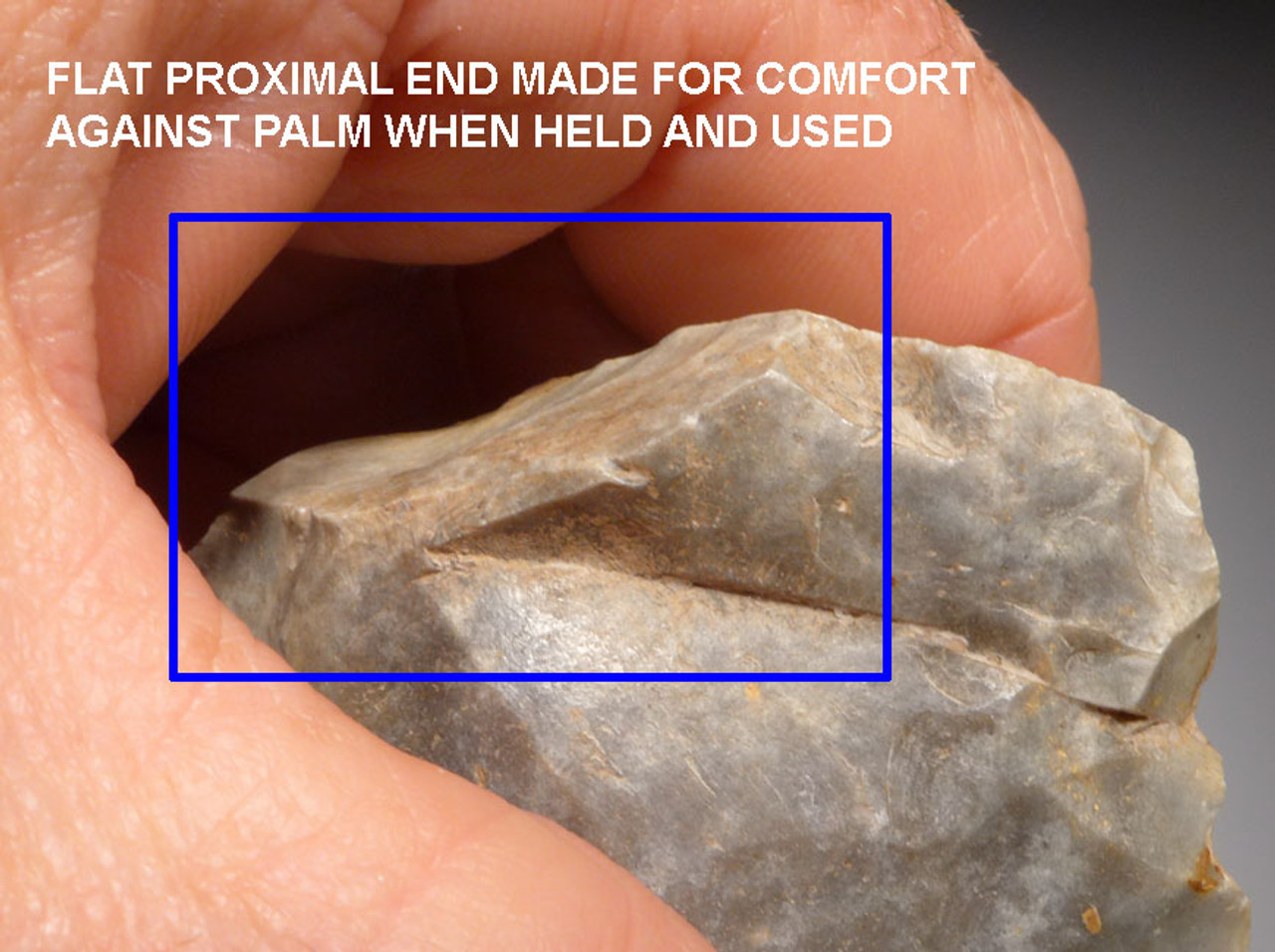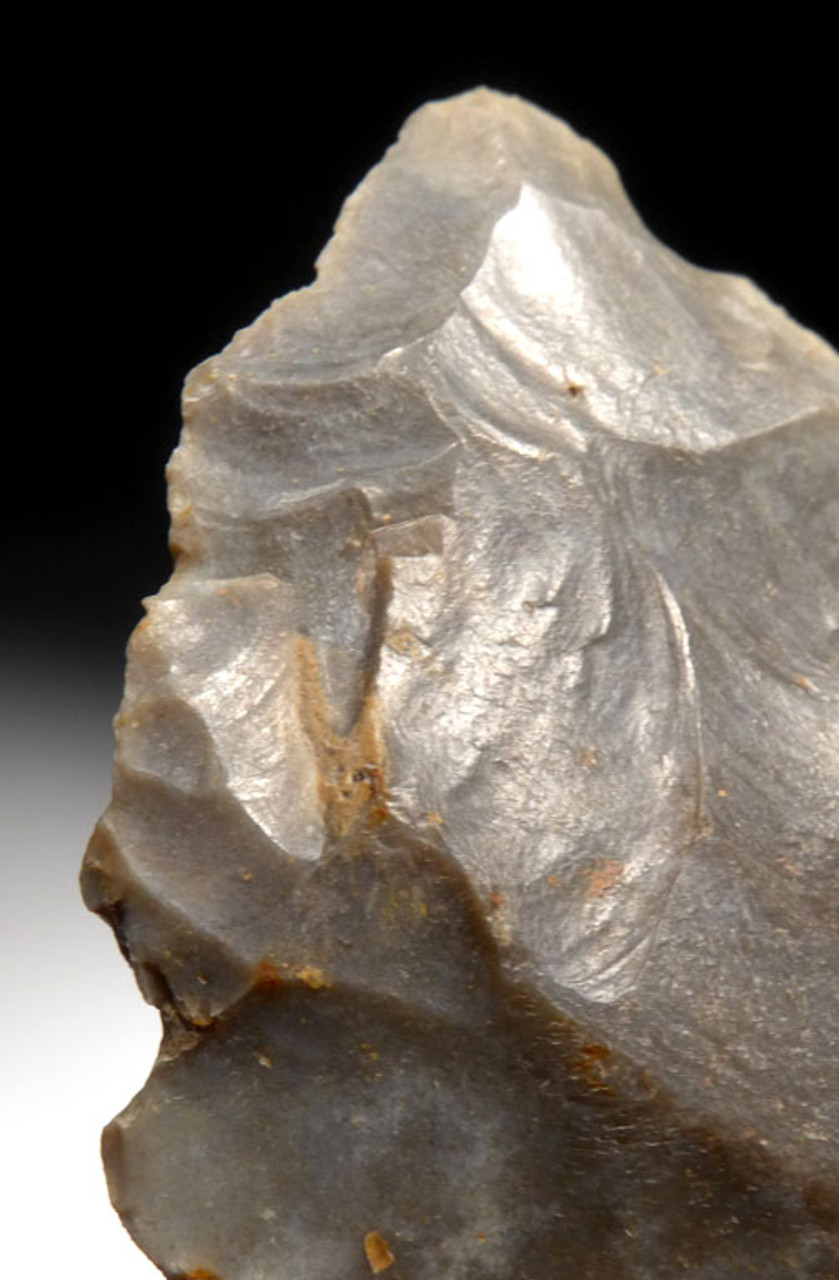Product Description
ID
|
Mousterian Hand Axe
|
||
FOUND
|
Rock Shelter - Thury-Harcourt,
|
||
AGE
|
MOUSTERIAN: 80,000 - 40,000 years
|
||
SIZE
|
3" long
|
||
CONDITION
|
INTACT AND COMPLETE. NO REPAIR
|
||
NOTE
|
EXCELLENT CORDIFORM EXAMPLE
|
||
INCLUDES DISPLAY BOX - Actual Item - One Only
Comes with a certificate of |
|||
CLICK HERE TO LEARN MORE ABOUT MOUSTERIAN TOOLS
With its dramatic bi-color patina from laying undisturbed on one side for millennia in a rock shelter, this flint CORDIFORM handaxe is a prize specimen. It shows classic MTA or MAT (Mousterian in Acheulian Tradition) typology with its faceted proximal end and bifacial flaking. Unlike their much larger predecessors of the Sahara during the Acheulian, Mousterian handaxes are much smaller in comparison. Not only are Mousterian handaxes considered some of the rarest and most prized tools of the Neanderthals, this exquisite representation is a perfectly executed example. The entire surface features a naturally lustrous soil sheen and a milky white patina on one side with a mottled light gray patina on the other. Authenticity IS evidenced by the presence of minerals deep in hinge fractures and microscopic crevices. COMPLETE AND AS MADE. NO RESTORATION, REPAIR OR MODERN DAMAGE.
This rare handaxe was fashioned out of flint by Neanderthals over 40,000 years ago and discovered in a Middle Paleolithic site in France. Fine quality Mousterian Neanderthal tools are rare and often move from one private collection to the next as most sites are now depleted, destroyed, built over and all are protected by law forbidding modern day digging. It is probable by simple logistics, that over time, high grade archeological tools will most definitely appreciate as collector demand continues to outpace the finite supply circulating amongst collectors that buy pieces and never resell. Investment aside, no Paleolithic collection should be without representative tools of one of the most famous primitive humans in history!
 US DOLLAR
US DOLLAR
 EURO
EURO
 AUSTRALIAN DOLLAR
AUSTRALIAN DOLLAR
 CANADIAN DOLLAR
CANADIAN DOLLAR
 POUND STERLING
POUND STERLING






























